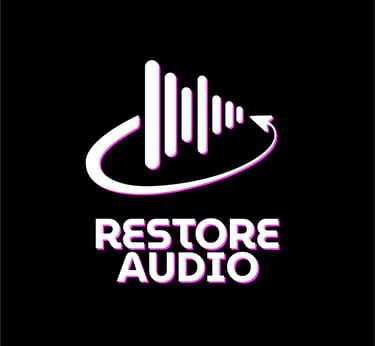Soldering 101: A Beginner's Guide
We call it "Micro-Welding"! This guide gives you everything you need to know to get started... We specialise in all DJ Kit Repair that requires Soldering!


Quick Start Guide
Soldering, (or Micro-Welding as we like to call it) is the process of joining two or more pieces of metal together using a filler metal, and is a fundamental skill in DJ kit repair - Especially when replacing components in a CDJ, XDJ, DJM. Technics can also benefit from a solder-reflow which helps reconnect any old dry joints. To learn more about what we do, have a looky here. If you're new to soldering, fear not; this guide will walk you through the basics, from the essential tools and safety precautions to the dos and don'ts of this craft.
Tools of the Trade:
Before diving into soldering, you'll need a few key tools:
Soldering Iron: This is your primary tool, and it comes in various wattages. A 25-40W iron is suitable for most beginner projects.
Solder: There are different types of solder, such as lead-based and lead-free. For electronics work, use rosin-core solder with a diameter of around 0.032 inches (0.8mm).
Soldering Station: An adjustable soldering station helps control the temperature of your iron. It's a good investment for precision work.
Soldering Stand: A stand with a sponge or brass wire tip cleaner keeps your iron secure and clean.
Safety Gear: Safety glasses protect your eyes from hot solder and debris. A heat-resistant mat shields your work surface from heat damage.
Ventilation: Soldering produces fumes that can be harmful if inhaled. Work in a well-ventilated area or use a fume extractor.
Helping Hands: These are handy tools with alligator clips for holding your workpieces in place while you solder.
Safety Precautions:
Safety is paramount when soldering:
Wear Safety Glasses: Protect your eyes from splattering solder and any debris.
Work in a Well-Ventilated Area: Proper ventilation is essential to prevent inhaling solder fumes. If working indoors, consider using a fume extractor.
Keep a Safe Distance: Be cautious of the hot soldering iron. Keep it away from flammable materials and never leave it unattended.
Use Heat-Resistant Surfaces: Place your soldering iron on a stand, and work on a heat-resistant mat to protect your work surface.
Avoid Skin Contact: Molten solder is hot and can cause burns. Handle it with care.
The Dos and Don'ts:
Now, let's go over some dos and don'ts:
Do:
Prep Your Workspace: Ensure you have all your tools and materials ready before you start soldering.
Tin the Iron: Before your first joint, "tin" the iron by melting a small amount of solder on the tip. This ensures better heat transfer.
Clean the Tip: Keep the iron tip clean by wiping it on a damp sponge or brass wire tip cleaner.
Heat the Joint, Not the Solder: Touch the iron to the joint you want to solder, not the solder itself. Once the joint is hot enough, apply the solder.
Be Patient: Let the joint heat for a moment before applying solder. A good joint should look smooth and shiny.
Practice and Learn: Soldering is a skill that improves with practice. Start with simple projects and gradually work your way up to more complex ones.
Don't:
Use Too Much Solder: Excess solder can create messy joints and may bridge connections, causing shorts.
Overheat Components: Be cautious not to overheat sensitive components. Some components, like transistors, can be damaged by excessive heat.
Breathe Solder Fumes: Avoid inhaling solder fumes. Work in a well-ventilated area or use a fume extractor.
Leave Your Iron On: Always turn off your soldering iron when not in use. Unattended irons can pose a fire hazard.
Rush the Job: Soldering requires patience and precision. Rushing can lead to poor-quality joints.
Remember, practice makes perfect. As you gain experience, you'll become more skilled at creating reliable and clean soldered connections. Once you can master this craft, you may even have to confidence to change your own Cue & Play buttons, re-solder a new Track Select Pot in, or even replace the Bass EQ on your DJM mixer! Whether you're fixing DJ kit, CDJs, your Technics or tackling DIY projects, mastering soldering opens up a world of possibilities. Happy soldering!
Click to share
SOCIALS
Discovery Court - 551 Wallisdown Rd - Poole - BH12 5AG


SOCIALS
Discovery Court
551 Wallisdown Road
Poole
BH12 5AG
ADDRESS


